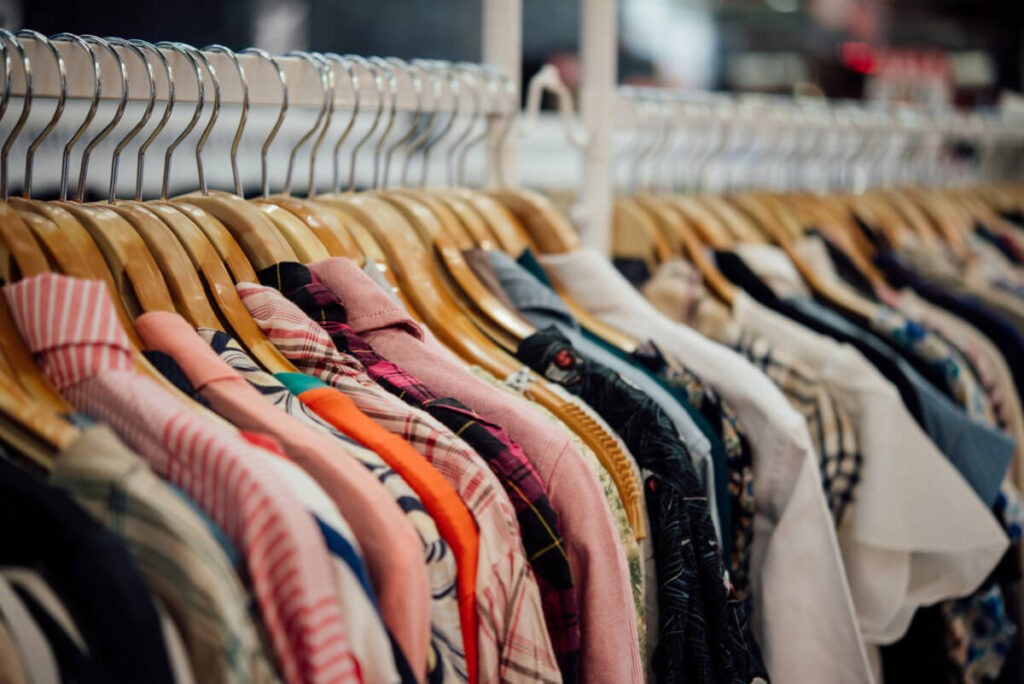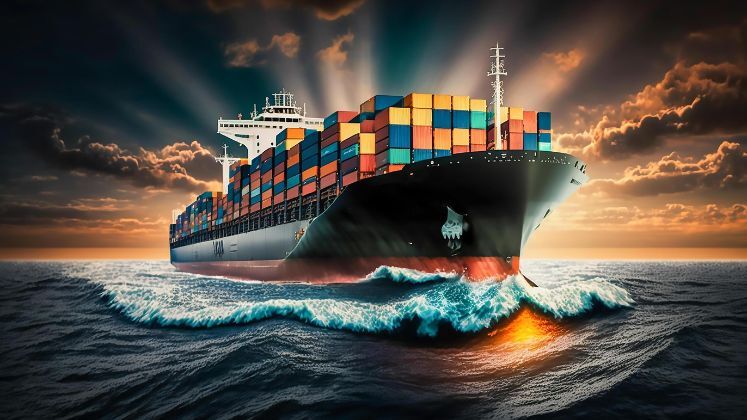FW

Vietnam's textile and garment sector is poised for continued growth in 2025, with exports expected to reach $44 billion, marking a notable 11 per cent increase over the previous year. This positive outlook is further supported by more than 42 per cent of local businesses forecasting improved performance in Q4 2024. The Vietnam International Trade Fair for Apparel, Textiles, and Textile Technologies (VIATT), scheduled for February 26-28, 2025, at the Saigon Exhibition and Convention Center (SECC), will play a pivotal role in fueling this momentum.
VIATT 2025: A premier industry event
Spanning 15,000 sqm of exhibition space, VIATT 2025 will feature a diverse array of products and solutions, showcasing the full spectrum of the textile industry, from apparel fabrics and accessories to technical textiles, nonwovens, and machinery. The event will highlight key trends such as sustainability and technological innovation with the introduction of two new zones: Econogy Hub and the Innovation & Digital Solutions Zone.
The fair will attract significant international participation, with exhibitors from leading textile-producing countries. Notable participants will include exhibitors from India, Japan, Korea, Pakistan, Taiwan, Thailand, and the inaugural European Zone. European exhibitors, such as BossaTicaret (Turkey), Chargeurs PCC Asia (France), Hohmann GmbH & Co KG (Germany), and Technical Absorbents Ltd (UK), will showcase their advanced textile solutions, including high-quality denim, interlinings, home textiles, and superabsorbent materials.
Focus on innovation and sustainability
The focus on innovation will be evident through new offerings like Murata Machinery's Vortex, a unique yarn production technology that enhances sustainability with high productivity and energy efficiency. Tamurakoma & Co (Japan) will also present innovative functional fabrics, while other Japanese firms like Toyoshima & Co and Stylem Takisada-Osaka will display advanced apparel fabrics and high-quality manufacturing solutions.
With the growing demand for sustainable solutions, the Econogy Hub and Innovation & Digital Solutions Zone will play crucial roles in positioning VIATT as a forward-thinking platform. These areas will explore the industry’s transition toward sustainable practices and technological advancements, offering valuable insights for both exhibitors and visitors.
Vietnam's textile sector remains a vital player in the global market, with Japan continuing to be a key destination for its apparel exports. Vietnamese exhibitors, such as IDFL Vietnam and Sigma Vietnam Industrial, will join global counterparts in presenting the latest innovations in apparel fabrics, home textiles, and technical textiles. VIATT 2025 will strengthen Vietnam’s position as a leading textile manufacturing hub and an essential sourcing destination for international buyers.
A strategic platform for global buyers
VIATT 2025 will serve as a crucial platform for buyers from across the ASEAN region and beyond. Delegations from Malaysia, Myanmar, Thailand, and other key markets have already confirmed their participation. The fair will not only provide networking opportunities but also facilitate new business connections and partnerships within the textile and garment industry.
Organized by Messe Frankfurt (HK) Ltd and the Vietnam Trade Promotion Agency (VIETRADE), VIATT 2025 is set to be a major event for the textile and garment sectors. By bringing together exhibitors from Europe, Asia, and beyond, the fair will help accelerate industry growth and solidify Vietnam’s position as a global textile powerhouse.
Mexico has raised tariffs by up to 35 per cent on finished clothing products and 15 per cent on textile imports to protect its domestic textile industry, Economy Minister Marcelo Ebrard announced.
The tariff increases, effective until April 22, 2026, aim to counter unfair competition and reduce job losses in the sector, which has seen a decline of 79,000 jobs in recent years.
The move exempts countries with free trade agreements, like the US and Canada, and is not targeted at any specific nation, including China.
Ebrard emphasized that the measure seeks to boost national industry development and job creation. The tariff hikes align with efforts to strengthen the North American trade bloc amid concerns over Chinese imports.
Mexico has also stepped up efforts to combat illegal merchandise, particularly from China, as part of its broader trade and immigration strategy.
Nike reported fiscal 2025 second-quarter results for the period ending November 30, 2024, with revenues of $12.4 billion, an 8 per cent year-over-year decline (9 per cent currency-neutral).
Nike Direct revenues fell 13 per cent to $5.0 billion in the second quarter, primarily driven by a significant 21 per cent decline in digital sales and a 2 per cent drop in store sales. Wholesale revenues also experienced a decrease, falling 3 per cent to $6.9 billion.
Gross margin contracted by 100 basis points to 43.6 per cent, largely due to higher discounts and changes in sales channel mix. The company's net income declined 26 per cent to $1.2 billion, with diluted earnings per share dropping 24 per cent to $0.78. Converse revenues were not spared, falling 17 per cent to $429 million, reflecting declines across all markets.
CEO Elliott Hill emphasized Nike’s renewed focus on sport to reignite brand momentum. “We’re taking immediate action to reposition our business and deliver long-term shareholder value,” he stated.
Inventories remained flat at $8.0 billion, while cash and equivalents stood at $9.8 billion, reflecting operational cash generation offset by share repurchases and dividends.
Nike returned $1.6 billion to shareholders, including $557 million in dividends (up 7 per cent) and $1.1 billion in share buybacks. Since 2022, NIKE has repurchased 112.8 million shares worth $11.3 billion under its $18 billion program.
Despite headwinds, CFO Matthew Friend expressed confidence in the company’s strategic repositioning efforts.

A new study by Prof Sheng Lu and research assistant Gabriella Giolli of the University of Delaware has shed light on India's growing potential as a key apparel sourcing destination for US fashion companies. The study, which examined recent research and industry trends, found that India is well-positioned to capitalize on several factors, including its large and skilled workforce, vertically integrated textile industry, and government support for the sector.
Reasons for India's growth prospects
As per United Nations Industrial Development Organization (UNIDO), India's textile and apparel industry produced approximately $76.5 billion in textiles and $26.64 billion of apparels in 2022, surpassing most other Asian countries. India is also one of the world's largest textile fiber producers, including cotton, silk, polyester, and viscose. Over 90 per cent of India's textile raw materials can be sourced domestically, ensuring a stable and reliable supply chain. India exported about $15 billion in apparel in 2023, making it the world's sixth-largest apparel exporter.
India’s biggest positive is its large and skilled workforce. It has a vast and skilled workforce, with over 45 million workers directly employed in the textile and apparel sector. This provides a significant advantage in terms of labor costs and scalability. Moreover India has a well-developed and vertically integrated textile industry, capable of producing a wide range of fabrics and garments. This reduces reliance on imported materials and streamlines the supply chain. The government has been actively promoting the textile and apparel industry through various initiatives, such as the Production Linked Incentive (PLI) scheme. This provides financial incentives and support to manufacturers, further enhancing India's attractiveness as a sourcing destination. Also, US fashion companies are increasingly diversifying their sourcing strategies to reduce reliance on China. India, with its favorable conditions and growing capabilities, is emerging as a strong alternative. In fact, several major US fashion brands have already started sourcing from India, including Gap Inc., Target, and Walmart. These companies have reported positive experiences with Indian suppliers, citing their quality, reliability, and competitive pricing.
"India has the potential to become a major apparel sourcing hub for US fashion companies," says Sheng Lu, Associate Professor at the University of Delaware. "The country's strengths in terms of labor costs, vertical integration, and government support make it an attractive alternative to China."
However, while India offers many advantages, there are also some challenges that US companies need to be aware of. For example they need to know India's infrastructure is still developing, and transportation and logistics can be challenging. Bureaucracy also can be complex and time-consuming to navigate. Lead times for production in India can be longer than in China.
India's textile and apparel industry is going through major changes with government support, industry initiatives, and a growing demand for ethically sourced and sustainable products. As US fashion companies continue to diversify their sourcing strategies, India is well-positioned to capture a larger share of the market. The country's strengths in terms of labor costs, vertical integration, and government support make it an attractive alternative to China and other sourcing destinations. With continued investment and development, India is expected to become a leading player in the global apparel industry.

A recent study by RAPID and the Friedrich-Ebert Stiftung paints a worrying picture for Bangladesh's ready-made garment (RMG) industry. The report warns that Bangladesh's apparel exports to the European Union (EU) could plummet by up to 21 per cent due to the combined impact of Vietnam's rising dominance and Bangladesh's impending graduation from Least Developed Country (LDC) status.
Reasons for the decline
On major reason is the EU-Vietnam Free Trade Agreement (EVFTA), in effect since 2020 that grants Vietnam zero-duty access to the EU market, giving it a significant edge over Bangladesh. This advantage is projected to boost Vietnam's apparel exports substantially. Add to this Bangladesh oncoming graduation from LDC status in 2026. This will result in the loss of duty-free access to the EU under the Everything But Arms (EBA) initiative, potentially leading to tariffs of up to 12 per cent on Bangladeshi garments. Bangladesh has lagged behind Vietnam in developing its domestic textile industry. This means higher reliance on imported raw materials, making Bangladeshi garments less competitive on price. The study also highlights Bangladesh's slower progress in implementing effective policies to improve its business environment and attract investment.
Table: Apparel exports to EU
|
Country |
Apparel exports to EU (2022) |
Projected apparel exports to EU (2027) |
|
Bangladesh |
$18 billion |
$14.22 billion |
|
Vietnam |
$22 billion |
$26.4 billion |
The study emphasizes the importance of Free Trade Agreements (FTAs) in shaping global trade. While the EVFTA benefits Vietnam, Bangladesh currently lacks comprehensive FTAs with major markets like the EU. Negotiations for FTAs with Japan and Singapore are ongoing, but experts stress the need for diversification and structural reforms to enhance competitiveness.
In fact several factors impact garment exports. For example stringent rules of origin under the EU's Generalized Scheme of Preferences (GSP+) can hinder Bangladesh's exports. And the EU's focus on sustainability and labor rights requires Bangladesh to improve its practices to maintain market access. Also, inadequate infrastructure, including port facilities and energy supply, adds to production costs and delays in Bangladesh.
The study therefore urges the Bangladeshi government to:
• Negotiate extended transition periods with the EU for LDC graduation.
• Relax rules of origin under the GSP+.
• Pursue additional FTAs to diversify market access.
• Invest in backward integration, particularly in man-made fibers and recycling technologies.
• Improve trade infrastructure and address energy supply deficits.
• Align with EU standards on sustainability and labor practices.
Focusing on its trade relationships with eight member nations including Japan, Singapore, New Zealand, Chile, Peru, Malaysia, Vietnam and Brunei, the updated version of the Comprehensive and Progressive Agreement for Trans-Pacific Partnership (CPTPP) was released by the UK Fashion and Textile Association (UKFT) on December 15, 2024.
Offering valuable insights to navigate this trade bloc, the guide delves into the implications of the CPTPP for UK fashion and textile companies. The document is set to evolve with the integration of UK.
Currently the guide highlights issues like fashion and textiles in context, understanding CPTPP, Rules of Origin (ROO) and Product Specific Rules (PSR), Fashion specific ROOs and PSR, statements of origin duty-free categories, VAT requirements, intellectual property, certificates of origin.
The guide complements UKFT’s broader range of resources aimed at helping UK fashion and textile businesses expand globally. This includes tailored guides to export markets and Free Trade Agreements, alongside comprehensive advice on key import markets.
As seen from its ‘Fiscal Year 2024 Corporate Responsibility Report, parent company of brands Coach, Kate Spade and Stuart Weitzman, Tapestry reduced its Scope 1 and 2 greenhouse gas (GHG) emissions besides meeting science-based targets during the year. The company also made significant progress in sustainability, social impact, and community engagement under its framework, The Fabric of Change, highlights the report.
During the year, Coach extended the lifespan of its products by adopting the Coach (Re)Loved program. Giving a second life to around 14,400 of the brands’ items, the program took back 6,100 units, and repaired 91,000 items globally during FY2024. The company also managed to reduce GHG emissions by up to 80 per cent and water use by up to 95 per cent by introducing the iconic Soho Bag made from recycled denim materials.
While Kate Spade provided culturally relevant, community-led mental health resources to over 100,000 women and girls worldwide in FY2024, Stuart Weitzman launched a limited-edition fabric for Spring 2024 in collaboration with a non-profit supporting women’s empowerment, with Mercado Global to create a limited-edition fabric for its Spring 2024.
Investing in its communities and sustainability innovations helps Tapestry and its brands ensure long-term success, says Joanne Crevoiserat, CEO, Tapestry, Inc.
Despite current financial downturn hampering global economy, India managed to increase its RMG exports by 11.4 per cent to $9.85 billion from April-November 2024, as per the Apparel Export Promotion Council (AEPC).
India’s inherent strengths and strong supportive policy framework help boost the industry’s growth, says Sudhir Sekhri, Chairman, AEPC. The country continues to benefit from an end-to-end capability, a strong raw material base and a focus on sustainable practices by factories, he adds.
In future, more apparel orders will flow into India, opines Sekri. This will help India reinforce the global brands’ trust in its production capabilities. Upcoming trade show, Bharat Tex 2025 will also help attract global trade opportunities to India, he adds. Besides fostering collaboration the event will help India expand sourcing network and attract more FDI into the country, he adds.
Shrinking crop acreage in the North and Gujarat followed by a decline in production is likely to result in a 36.53 per cent dip in India's cotton exports during the 2024-25 season. Beginning October 1, 2024, India’s cotton exports are likely to contract to 18 lakh bales as against 28.36 lakh bales in the 2023-24 season, as per the Cotton Association of India (CAI).
Cotton acreage in the North spanning Punjab, Haryana and Rajasthan has shrunk by 35 per cent while Gujarat acreage has lowered by 15 per cent, reveals Atul Ganatra, President, CAI. This will help India stabilise cotton prices in comparison to the global market, he adds.
Total cotton pressing during the 2023-24 is estimated to reach 302.25 lakh bales compared to 327.45 lakh bales in the previous season. By November 2024-end, cotton supply in India is likely to rise to 108.41 lakh bales. This will include 69.22 lakh bales of cotton pressing, imports of 9 lakh bales and the opening stock of 30.19 lakh bales.
Cotton consumption till November-end is estimated to be 54 lakh bales while the exports are likely to reach 4 lakh bales of 170 kg by the end of the month.
China-based fabrics and home textiles manufacturer, Kelida plans to set up a production unit in the Qantara West Industrial Zone in Egypt.
To be developed with an investment of $30 million across 92,000 sq m, the project will be executed in partnership with the Suez Canal Economic Zone (SCZONE).
The textiles unit is a part of a two-project contract worth $38 million signed between Enxiao You, Chairman, Kelida and Waleid Gamal El-Dien, Chairman, General Authority of SCZONE.
More than 90 per cent of Kelida’s production will be directed towards export markets in Europe and the United States. The other project to be developed includes a food manufacturing facility in partnership with the Turkish company Saray Biskuvi ve Gida San AS.
These two projects will bring the total number of contracts being developed in the first phase of the West Qantara Industrial Zone to eight. Collectively, these projects represent investments worth of $309 million, covering 751,000 sq m and generating approximately 14,200 job opportunities.












